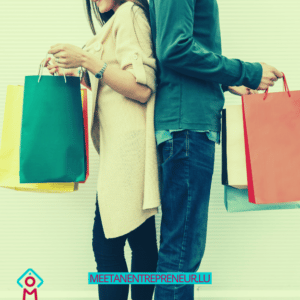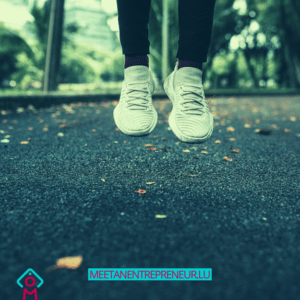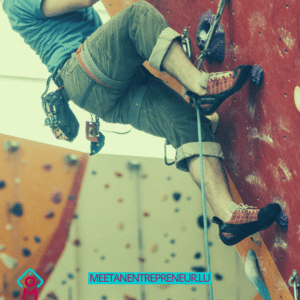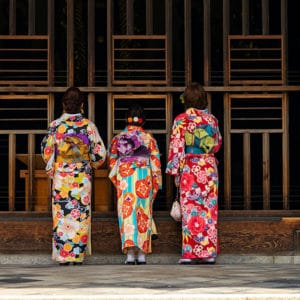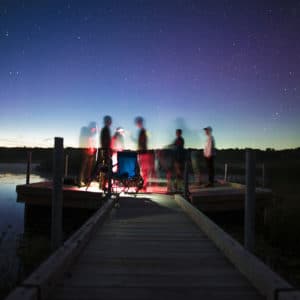Build a niche e-commerce
You acquired the Nutri-bay brand and website in 2017, what were your first actions? We first underwent a technological migration and expanded our range of suppliers. There were already customers, but not enough, so we had to increase this customer base. It was truly a new beginning, not only for the company but also for the two entrepreneurs that we were! Neither my partner nor I had owned a business before, and that was also what made it exciting.
Why did you choose to take over instead of starting from scratch?
It saved us from having to create a brand, a network of suppliers, etc. We liked the name, and the opportunity presented itself, so we seized it. The brand had been created with the vision of becoming a European leader. We took a more incremental approach to gradually become a leader in the European French-speaking market at our own pace.
Why did you choose to take over with a partner?
My partner is a neighbor, our children go to the same school, we were friends... We already spent quite a bit of time together, so we decided to team up in the business! In this context, there needs to be chemistry. In terms of skills and personality, we are completely different. It's something to think about beforehand. And it wasn't a done deal, especially since we started working in our garages! It can quickly become complicated, especially since when we took over Nutri-bay in 2017, we were not making any profit.
How did you turn things around?
My partner was fully dedicated to the business from 2017, while I was still doing some consulting on the side. In 2018, I joined full time, particularly focusing on business development, and that's when we started to see more significant figures. Financially, it still wasn't enough, but both of us had budgeted that we wouldn't be able to pay ourselves for a while. That's the advantage of entering entrepreneurship at 50, with some savings. In 2019, we secured major agreements with top suppliers, the community grew, and social media took off.
We woke up in 2020 with numerous projects in mind, issued our first paychecks—a significant milestone! However, in March 2020, we stopped paying ourselves and entered a period of patience and resilience. Fortunately, we were operating with our own funds, so there were no bank loans to repay.
Are you still operating with your own funds?
We wanted to start small, build on a solid foundation, and reinvest in the company. It was only in 2022 that we approached a bank for a line of credit, to make larger stock purchases and expand our storage area. At some point, even with several garages, it became unmanageable!
Does the size of the stock make a difference for customers?
We operate with 50 brands and 1200 references, all in stock; we don't use dropshipping. This aligns with our values of proximity. That's also why you see us at sports events in Belgium, Luxembourg, and France, within a radius of 200-250km. Today, 70% of our sales come from France, for example.
So do clients mostly discover you through events?
Yes, events and social networks. To delve into some technical details, we ran Facebook ads for retargeting for 5 years; it cost us a total of 30,000 euros, which was a lot for us at that time! We stopped in 2022, and since then, I redirected towards Google ads with a more than satisfactory Return On Ad Spend (ROAS) of 600%. It means that every euro invested brings me 6 euros. I allocate 2000 euros per month to it.
Calculating ROI at events is challenging because we hardly sell on-site. So, we run, showcase ourselves, greet people at the finish line, etc. I can assure you that when you finish your race and are warmly congratulated by a person with a big smile, you are in such an emotional state that you will remember it for a long time! It's a connection you can't recreate with an ad in a glossy magazine.
Why so many brands?
We generate 80% of revenue with 5 brands. But I insist on having 50. One might think we keep the references that sell the best, as many of our competitors do. But with a range, I have all tastes to offer to customers, not just the top three sellers. It also positions us as a true "one-stop shop," where you can find everything. I also want to support emerging young brands. What's nice is that we've become big enough for brands to notice us and call us directly. For example, Naak contacted us to offer a temporary European exclusivity for a new product. They also appreciate having passionate people who understand their product, rather than an obscure buyer who only sees lines on a spreadsheet. And this applies not only to major brands. I can tell you that on some of the 50 brands, I don't make any profit; it may even cost me something to offer them. But these are young entrepreneurs launching themselves, and we spotted them. For them, we are the first "big" platform they are listed on. We help them understand why some of their products sell and others don't. Today, we have enough specialized data that is also interesting for suppliers: the type of sport, consumed products, frequency, geographical area, etc.
Does passion help?
We have reached a stage where we know our own skills, and we know our customers well. My partner is a former pharmacist, and I come from the business side. Technically, we understand the product's composition, its marketing potential. We know our suppliers' products, and we make it a point to know them as well as they do. We have found ourselves in a meeting with a major brand in the sector where we knew their products better than their sales team. The discussion was interesting! It allows us to pitch it very well to both our customers and event organizers. But without passion, we could never have lasted this long. It's a lot of work, and you have to be passionate to endure.
What are your current volumes?
We ship around 1500 orders every month, with an average basket size of 66 euros. The sports nutrition sector is one with little margin, so volume is crucial.
However, it's important to keep in mind that in online sales, even for niche products, there is constant informational competition. If a direct or indirect competitor runs an ad or a big promotion at the right time, the customer will seize the opportunity. There is a constant zigzag in customers' minds, and you can lose them quickly, even if acquiring them was expensive. Because Google Ads, events and all that, it's customer acquisition. And it's not 5 euros per customer, not even 10. In my mind, I tolerate a cost of 10 to 20 euros per customer, but I know it's more.
What are your other differentiation levers?
We have a network of ambassadors who talk about our products in exchange for vouchers. It's nice and we indirectly benefit from their community, but it's not necessarily the most converting since their followers may not necessarily explore Nutri-bay. Currently, we have 15 professionals and 50 "amateurs" elite, enthusiasts, or athletes with social projects that we want to support. Among the professionals, some will participate in the Olympics next year. I can't quantify the return on investment exactly since it's more about awareness and positioning. For amateurs, the balance is about zero: they recommend the products enough to cover the costs of our partnership with them.
Another thing that is dear to me: I personally write a note for each package. I still do it now. I've written 32,000 words on the packages. We have an automated sequence that we customize based on the number of orders, with accompanying discounts. We combine this with customer information provided by Shopify: if it's their first order, if they used a customer code, for example. For loyal customers, we look up the timings of their latest races, and I congratulate them on their specific timing.
Does all this contribute to customer loyalty? I like to believe so, but I don't have the data to prove it. Despite that, I currently have one in two customers who do not come back. We are growing, but there is customer churn. We have 15,000 customers, and 8,000 have made more than one purchase. But just in 2023, we have acquired more than 5,000 new customers, who might (I hope!) order again soon. There is still some seasonality to manage for outdoor sports.
There are four of you now; how do you distribute roles?
We have Kyrian, who is more focused on digital and social media, and Ludivine, who will handle events and partnerships. She has just arrived, and she will relieve us in that area, which my partner and I handled together until now. Between March and October, I didn't have a free weekend for years! And everyone helps with packaging; it's important that everyone stays involved in this operational aspect.
You liked this content? Share it now!
